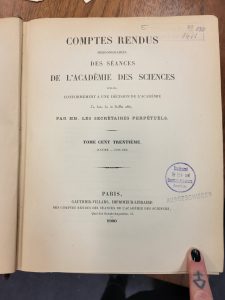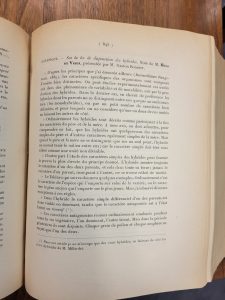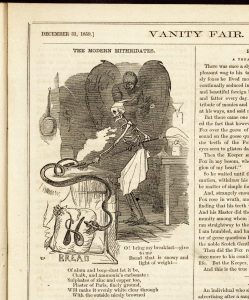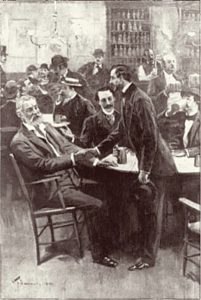Spare Change Library Podcast: New Episode!
Groom of the Tomb: gamifying the book
Episode 5 of the Spare Change Library Podcast explores the popular genre of gamebook stories. On this episode Demian Katz (Director of Library Technology at Villanova) joins us to talk about his original gamebook, Groom of the Tomb; or, Lancelot Darling’s Decisions, followed by a live-playthrough demonstration with my guest Rebecca Oviedo (Distinctive Collections Archivist) and me–your host, Meg Piorko (Distinctive Collections Librarian).

Choose Your Own Ending
The genre of fiction popularly known as ‘choose your own ending’ gamebooks is influenced by traditions of oral storytelling, programmed instruction, and Role-Playing Games. Both entertaining and pedagogical, these interactive stories teach adolescent readers low-stakes decision-making skills all while experiencing the game from the perspective of the main character. Additionally, game-novels allow the reader to participate in the story with a degree of agency from the perspective of a fictional character, thus stepping outside the realm of their own lived experience.
Pioneering the Genre

The ‘choose your own ending’ concept was pioneered by women authors as a very much adult genre to enhance readers experience of romance novels. The earliest example of this is Doris Webster and Mary Alden Hopkins who published Consider the Consequences! in 1930. The romance novel, which included 43 alternative endings, gives agency to the reader to choose the fates of Helen Rogers and her suitors Jed Harringdale and Saunders Mead.
It is interesting that the first interactive game-books were created within the romance genre, which particularly lends itself to interactive decision making. Mrs. Alex. McVeigh Miller’s 1883 Bride of the Tomb and Queenie’s Terrible Secret, is written in such an engaging and playful style, which was not lost on our guest and author Demian Katz, who took inspiration from the twists and turns of Mrs. Miller’s romance pulps and for his own choice-driven gamebook, The Groom of the Tomb; Lancelot Darling’s Decisions.
 Find out the fate of Lancelot Darling during our live-playthrough by tuning into Episode 5, Groom of the Tomb: gamifying the book.
Find out the fate of Lancelot Darling during our live-playthrough by tuning into Episode 5, Groom of the Tomb: gamifying the book.
A digital version of the 1883 edition of The Bride of the Tomb as well as full-length audio recordings are available open access through Villanova’s Digital Library at digital.library.villanova.edu
Spare Change Library Podcast is a dime novel and popular literature podcast, featuring audio editions of stories and scholarly discussion–available through a shared RSS feed on dimenovels.org


















 Last month an anonymous donation of a first edition Defense of Mendel’s principles of heredity, by
Last month an anonymous donation of a first edition Defense of Mendel’s principles of heredity, by  A signature on the front pastedown of this copy reads “J. Aldrich”.
A signature on the front pastedown of this copy reads “J. Aldrich”. 





